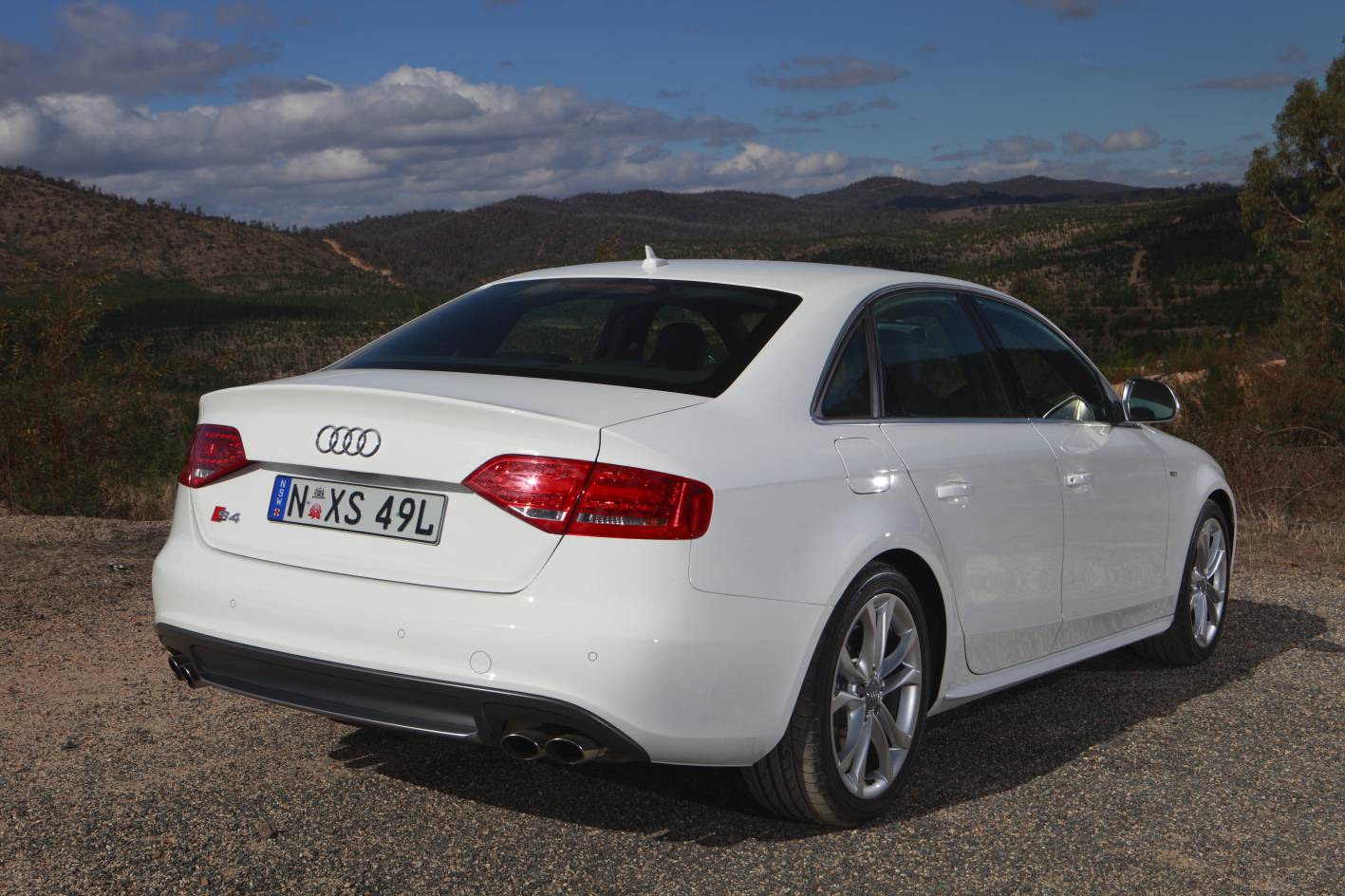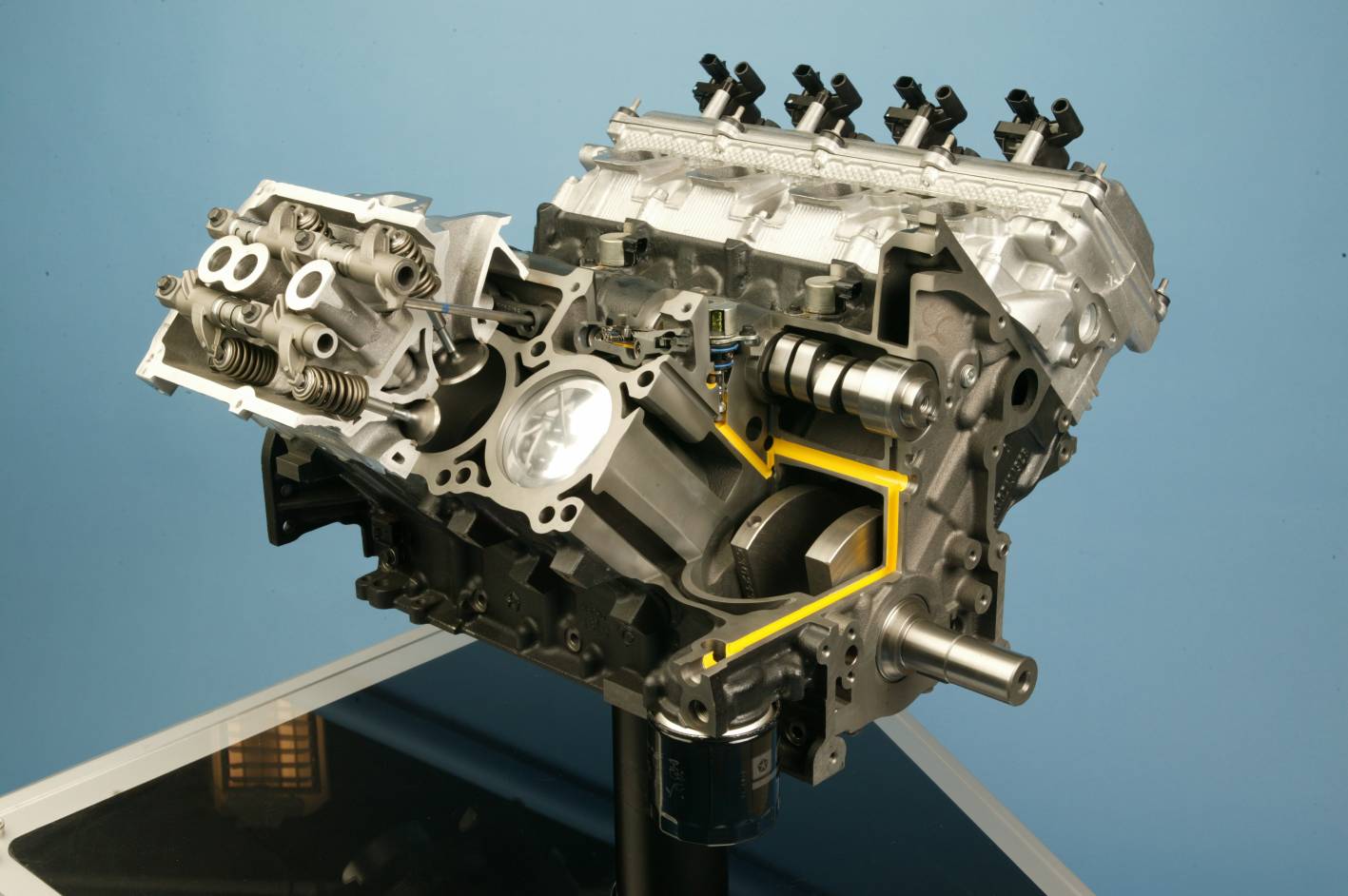Introduction
Audi’s CAKA and CCBA engines were 3.0-litre supercharged V6 petrol engines that were first introduced in Audi B8 S4 and S4 Avant in 2009 and subsequently offered in the 8T S5 Cabriolet, 8T S5 Sportback and 8T S5 Coupe. The CAKA/CCBA engines effectively replaced the 4.2-litre BBK V8 engine which was used in the Audi B6 S4 and Audi B7 S4.
Key features of the CAKA/CCBA engine included its:
- Lightweight, 33 kg Alusil crankcase;
- Double overhead camshafts with variable intake camshaft timing;
- Four valves per cylinder actuated by roller finger cam followers;
- Eaton supercharger which provided boost pressure up to 0.8 bar;
- Direct injection (Audi’s ‘Fuel Stratified Injection’ or FSI); and,
- Compression ratio of 10.3:1.
The CAKA/CCBA engine, including the supercharger, weighed 189 kg.
Released in 2012, the CGWC engine introduced a ‘start-stop’ system which could shut down the engine when stationary in traffic. At this time, a recuperation system was also introduced which converted kinetic energy into electrical energy when the vehicle was coasting or braking.
| Engine | Trans. | Power | Torque | Model | Years |
|---|---|---|---|---|---|
| 3.0-litre CAKA/CCBA super-charged V6 | 7sp DCT | 245kW at 5500-7000rpm | 440Nm at 2900-5300rpm | Audi B8 S4 | 2009-12 |
| Audi 8T S5 Cabriolet | 2009-11 | ||||
| Audi 8T S5 Sportback | 2010-11 | ||||
| 3.0-litre CGWA super-charged V6 | 7sp DCT | 245kW at 5500-7000rpm | 440Nm at 2900-5300rpm | Audi B8 S4 | 2012-15 |
| Audi 8T S5 Cabriolet | 2012-on | ||||
| Audi 8T S5 Sportback | 2012-on | ||||
| Audi 8T S5 Coupe | 2012-on |
Block
The closed-deck block for the CAKA/CCBA/CGWA engine was produced from hypereutectic ‘Alusil’ aluminium-silicon alloy (AlSi17Cu4Mg) in a low-pressure gravity die-casting casting process.
The CAKA/CCBA/CGWA engine had a 90-degree ‘V’ angle with an 18.5 mm cylinder bank offset. Furthermore, the 84.5 mm bores were spaced at 90 mm intervals and an 89.0 mm stroke provided a capacity of 2995 cc. Within the bores, the CAKA/CCBA/CGWA engine had mechanically-stripped hard silicon crystal integral liners that were honed under simulated mechanical stress.
Crankshaft, connecting rods and pistons
The CAKA/CCBA/CGWA engine had:
- A cross-plane, die-forged steel crankshaft with offset crank pins (i.e. split-pin configuration);
- 153 mm long cracked connecting rods with 56 mm diameter big-end bearings and three-component composite bearing bushings; and,
- Cast aluminium pistons with Ferrostan plating for the piston skirts.
Cylinder head
The CAKA/CCBA/CGWA engine had a cast aluminium cylinder head with chain-driven double overhead camshafts. The four valves per cylinder were actuated by low-friction roller finger cam followers with automatic hydraulic valve clearance adjustment. For variable intake valve timing, the intake camshaft could be adjusted over a 42 degree range relative to crankshaft angle. Furthermore, the exhaust valves were chrome plated and had sodium-filled hollow stems, while the valve seats were steel plated.
Eaton ‘Roots’ supercharger
The CAKA/CCBA/CGWA engine was fitted with a Roots supercharger – produced by Eaton – that was positioned in the ‘V’ of the cylinder banks in place of the intake manifold. The supercharger had two four-vane rotors with each vane set at an angle of 160 degrees relative to the longitudinal axis. The rotors were driven mechanically by the crankshaft (via the second pulley of the belt drive) and were coupled by a gearing outside the housing so that they could counter-rotate synchronously. The supercharger was driven continuously, i.e. it could be disengaged and engaged by a magnetic coupling (as was the case in the supercharged Mercedes-Benz M112 V6 engine). Each belt drive was insulated against crankshaft vibration by a rubber buffer in a shared torsion vibration damper. The ribbed V-belt had a replacement interval of 120,000 kilometres and the crankshaft-to-supercharger drive ratio was 1:2.5.
When the rotors turned, air was conveyed between the vanes and the outer wall of the housing from the air inlet (on the intake side) to the air outlet (on the pressure side). According to Audi, the rotors could:
- Rotate at a speed of up to 23,000 rpm;
- Deliver 1000 kg of air per hour;
- Force intake air into the combustion chambers at a boost pressure up to 0.8 bar.
Depending on engine speed, power consumption of the supercharger module ranged from 1.5 kW to 37.3 kW (2 hp to 50 hp). The total weight of the supercharger module was 18 kg (excluding coolant).
The supercharger had an electronic control valve to regulate charge pressure which was integrated in the supercharger module and connected the pressure side to the intake side. By opening the bypass valve, a portion of the air flow could be recirculated through the open bypass to the intake side of the supercharger. At full throttle, the bypass valve was closed such that air flowed through the throttle valve, supercharger and intercooler into to the engine. At part-throttle operation, however, the bypass valve was open so that a portion of the airflow was recirculated through the open bypass valve to the intake side.
To limit supercharger noise, the CAKA/CCBA/CGWA engine had:
- A multilayer damping plate reduces noise at the gas outlet of the supercharger;
- Insulating mats around and below the supercharger module; and,
- A modified intake.
Supercharging rationale
According to Audi, comparative tests demonstrated the mechanical supercharger to be superior to a biturbo concept for the V6 engine in terms of packaging, starting performance and responsiveness. The table below summarises the advantages and disadvantages of supercharging relative to an exhaust gas driven turbocharger.
| Mechanical supercharger versus exhaust turbocharger | |
|---|---|
Advantages:
|
Disadvantages:
|
Intercoolers
The CAKA/CCBA/CGWA engine had two water-to-air intercoolers that were integrated into the supercharger housing. The cooling circuit for the intercooler was separate from the primary cooling circuit, but shared an expansion tank. Generally, the temperature within the intercooling circuit was lower than the primary circuit.
Intake
The CAKA/CCBA/CGWA engine had intake manifold flaps that were housed in an adaptor element between the supercharger module and the cylinder head. At lower engine speeds, the intake manifold flaps could increase the tumbling effect of the intake air for better mixture formation and more complete combustion.
Fuel Stratified Injection (FSI)
The CAKA/CCBA/CGWA engines had a common-rail injection system which injected fuel directly into the combustion chambers – via six-hole injectors that were developed in conjunction with Continental – at a pressure of up to 150 bar. Furthermore, the system used a ‘third generation’ high-pressure fuel pump that was supplied by Hitachi.
For the CAKA/CCBA/CGWA engines, Audi’s ‘Fuel Stratifed Injection’ (FSI) provided homogeneous mixture formation with the complete fuel charge injected during the intake phase, except for the engine start and cold start/warm-up phases.
On the start-up phase, a high-pressure stratified mode was used whereby fuel pressure was increased to between 45 and 100 bar depending on engine temperature (at lower temperatures, the fuel pressure was higher). High-pressure stratified starting occurred at coolant temperatures between -24 degrees Celsius and at 90 degrees Celsius (operating temperature). At coolant temperatures below -24 degrees Celsius, however, injection starting occurred at lower pressure to protect the components, with the pressure matched to that in the electrical fuel pump in the fuel tank.
For the cold start/warm-up phase, dual injection or homogeneous split (HOSP) injection was used. For dual injection, the total quantity of fuel to be injected is divided into two partial quantities and injected into the combustion chamber at different times. The injection time window was before (BBDC) and after the bottom dead centre (ABDC) position of the piston. By the second injection, the intake valves were already closed. Homogeneous split injection was used in two situations:
- Cold start (always used): occurred at coolant temperatures between -7 degrees Celsius and 45 degrees Celsius and served to heat up the catalytic converters; and,
- Warm-up: only used under heavy engine load when the driver sought a high engine output. Warm-up optimised engine load and speed, but also reduced soot emission. The temperature range for warm-up is between -20 degrees Celsius and 45 degrees Celsius. In this case, the second injection was later than in the cold start phase.
The injection system for the CAKA/CCBA/CGWA engine was controlled by the Simos 8 engine control module that was developed by Audi and Continental (formerly Siemens VDO). Furthermore, the CAKA/CCBA/CGWA engine had a compression ratio of 10.3:1 and 1-4-3-6-2-5 firing order.















